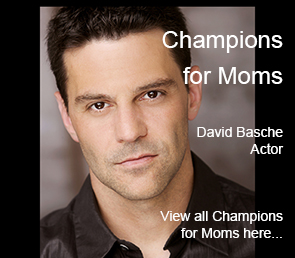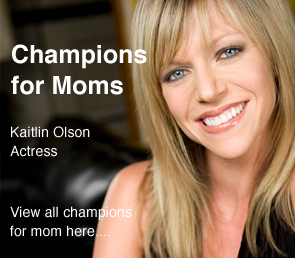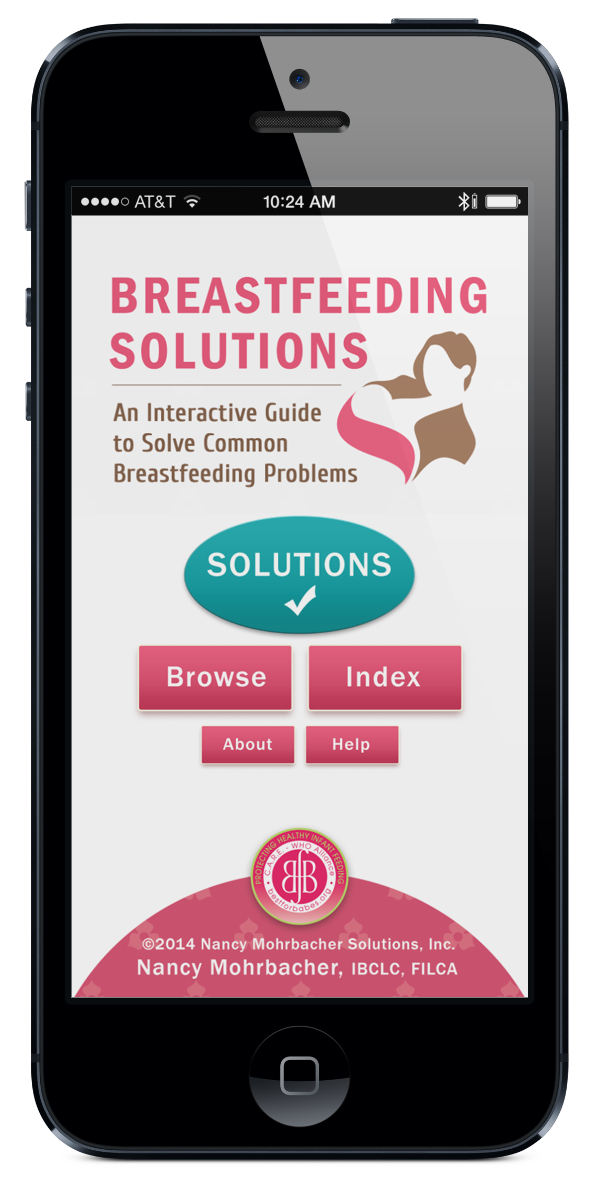 We all know about the importance of skin-to-skin contact in the early hours and days of breastfeeding.
We all know about the importance of skin-to-skin contact in the early hours and days of breastfeeding.
But a new study from Sweden takes a look at a different question: can skin-to-skin contact and a laid back position resolve severe latching-on problems in older babies?”
In this randomized, controlled study, researchers recruited mothers who reported that their infants were having severe latch-on difficulty. The average age of the infants at the time of the study intervention was 3 weeks, and most were being fed by bottle.
A latch-on problem was defined as any of the following infant behaviors, as reported by the mothers:
- did not latch-on at all (roughly 60% of the total participating babies)
- would start to latch-on on but discontinue
- latched-on superficially without or with a nipple shield
- latched-on only on one breast
Nearly all mothers reported being instructed about how to breastfeed with “hands on assistance:” the sometimes forceful traditional method of breastfeeding instruction in hospitals (one hand on baby’s neck, one hand on breast, connect!). Mothers were asked about their babies’ reactions to this technique, and some reported “strong reactions” such as panicked, frenetic crying or “screaming hysterically.”
230 women volunteered for this study. One interesting note is that in 127 of those cases, the study’s screening process seems to have resolved the latch-on problem! That left 103 mother/infant pairs for the intervention.
And here’s what the intervention looked like:
In the intervention group, mothers lay in a reclined position in a hospital bed, and the baby was placed prone between her breasts. Her upper body and the baby were unclothed and in skin-to-skin contact. Mothers were encouraged to allow the infant to crawl while holding a protective arm lightly over the baby. They were encouraged to continue this practice at home as often as they liked. The mothers recorded how often they did this, and the median number of skin-to-skin sessions in this group was a little over one per day (8.5 in 7 days).
In the other group, the mothers and babies were fully dressed, and the mothers were usually seated in an arm chair. They were asked to start breastfeeding as they usually did. They were then instructed to continue this practice at home.
The pairs were then assessed for the mothers’ emotional and pain response, whether the babies latch-on problems resolved, and how long it took for the latch-on problems to resolve.
Here’s what they found:
- Mothers in the intervention group scored higher on the measure of emotions about breastfeeding than mothers in the control group, though this difference faded by four months.
- Mothers in the intervention group scored lower on the measure of pain (reported less pain) than mothers in the control group.
- The percentage of babies starting to latch-on and suckle did not differ significantly between the intervention and control groups.
- The time it took for babies’ latch-on difficulty to resolve was significantly shorter in the intervention group (2 weeks) as it was in the control group (4.7 weeks). The percentage of babies regularly latching within 3 weeks was 74% in the intervention group compared to 39% in the control group.
- Among babies in the intervention group who began latching well within 3 weeks, 94% had had a “strong [negative] reaction” to “hands on latching,” as described above. This compared to 33% in the control group who began latching in the same time frame.
- In total, 81% of the infants’ latching problems eventually resolved, at a median infant age of over 7 weeks (a range of 2 weeks to 5 months!).
There are a number of interesting conclusions to highlight here. One is that skin-to-skin can speed babies’ return to the breast. And time is of the essence, it seems to me, since many women can’t or won’t keep trying for a month to get their babies to latch regularly (median infant age at resolution was over 7 weeks*).
Another is that “hands on assistance” is causing latch-on difficulties for some babies. This skin-to-skin intervention was of particular benefit to those babies, but you have to wonder how many of these problems could have been prevented by the use of a different method from the start.
There are a few ways in which this study combines different variables so that these conclusions seem a little muddy to me. The emphasis of the paper is on skin-to-skin contact, but the intervention also involved two other factors: a laid-back position, and self attachment (babies allowed to crawl to the breast and latch on independently). So while we can say that this combination of things helps, it’s not clear how much is attributable to skin-to-skin and how much to a reclined position or self attachment. Practically speaking it probably doesn’t matter, but it would be interesting to know if you get the same results with just a reclined position, for example.
And finally, it’s hard not to miss that over half of the women who initially volunteered for the study were excluded because the help they got through the study screening process resolved the problem! So for many women, this kind of longer-term skin-to-skin intervention is not even necessary. Just some good basic help goes a long way.
Did you have a baby with “severe latch-on difficulty?” Did you try skin-to-skin contact? Had your baby had a bad reaction to “hands on breastfeeding” help? What ultimately resolved the problem, or did it persist?
*Recall that this study was conducted in Sweden, which has among the world’s best maternity leave policies. Mothers are under far less pressure to return to work and likely have more of an opportunity to work on breastfeeding problems such as these.

















This is certainly an interesting study. My daughter was born at 37 weeks and had trouble latching. She just would not latch, but I refused to give up. We did a lot of skin to skin contact and I always tried to get her on my breast as much as possible. I was pumping like a machine for her to be able to have my milk, and literally I tried to get her to latch for about 5 months. At 5 months she decided that she would latch and we took off from there. I think its a shame that women don’t try harder if they want to meet their breastfeeding goal. Nothing was going to stop me from meeting mine!
Interesting! Did you notice that the range of eventual regular latch-on was from 2 weeks to 5 months?
Laur, my daughter had latch issues as well up to 4 months and around then she seemed to “get it”. At 2 she was diagnosed with Apraxia, an oral motor planning disorder. I attributed long-term latch problems to her Apraxia. I too am glad we were super persistent. My daughter nursed until 3 days before her 3rd birthday. It’s a lot of work but totally worth it.
@Tanya - super interesting that the range was until 5 month. Glad, that my daughter and I could try for so long with a successful result. At 16 month we are still nursing in the AM as she is self-weaning
Thanks for sharing - a very interesting study that touches on a number of different areas that need more understanding.
My little guy was born at 30 weeks, so we weren’t able to do skin-to-skin until 6 days later. He didn’t even latch until he was about 39 weeks, but even then it was off and on and it was a stronger latch with a nipple shield. When we were in the NICU the nurses and LCs showed me at couple different positions, but they all felt awkward. I’m wondering if the laid back position would have helped him since he was so small, or do you think that would have caused him to brady and de-sat?
I use laid back nursing or biological nuturing as a tool for babies which do not want do drink from mum´s breast or only with nipple shields on. It worked miracles for little ones up to 6 weeks. Until now I had not the challenge to try it with older ones and never for babies unter 2 weeks (in Germany all mothers get provided with free midwive care for several weeks after birth).
All mothers were absolutely stunned about the ability of their babies and the hard work they put into getting to the breast by themselves und to latch on. But until now no mother I worked with used laid back nursing for longer than needed. When the babies were in love with the bare nipple, they also accepted to be hold in the craddle position for nursing.
It is great to see this method scientfically studied.
I was expecting “older” to mean more than a few months Doing the laid-back positioning is REALLY helping me with my 9mo who is super distractable now and wouldn’t stay latched on for more than a few seconds. Laying back at a 45* angle or so lets him eat and see, and makes us both a lot happier
Doing the laid-back positioning is REALLY helping me with my 9mo who is super distractable now and wouldn’t stay latched on for more than a few seconds. Laying back at a 45* angle or so lets him eat and see, and makes us both a lot happier 